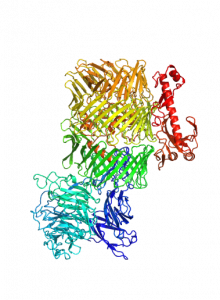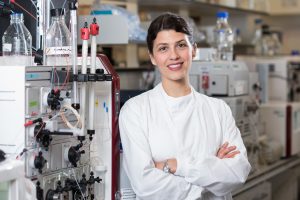Elena Seiradake, Somerville fellow and tutor in biochemistry, writes about a breakthrough insight into the make-up of the brain.
What is the significant new information that your team has uncovered?
My team discovered that a protein called Latrophilin forms large molecular assemblies at the surface of brain cells. Depending on the context, these assemblies contain different numbers of other proteins. Latrophilin thereby acts as a “context-recognizer” that helps brain cells navigate complex environments (Jackson et al Nature Commun 2016). The brain protein “Teneurin” is a component of specific Latrophilin assemblies. Unexpectedly, we found that Teneurin derives its shape from a big family of ancient bacterial proteins that are still found in bacteria today. This breakthrough insight has opened many questions (Jackson et al Nature Commun 2018).
Why does this matter?
It is estimated that about one third of the population is affected by mental health and/or brain disorders, resulting in a massive burden on society. A key reason why many brain-related disorders are difficult to treat is that brain biology is not well understood. The brain is stunningly complex, made up of billions of nerve cells that form a network with trillions of connections. Specialised cell surface proteins such as Latrophilin and Teneurin are responsible for enabling brain cells to navigate their environment and form the right connections. Understanding how this works exactly will help scientists to find better ways of treating diseases in which this has gone wrong. For example, many forms of attention-deficit-hyperactivity-disorder (ADHD) involve abnormal Latrophilin function.
Where does this lead, in terms of future pathways for your research?
What we have discovered so far is just the tip of an iceberg. My team aims to uncover key mechanisms by which different brain proteins come together to produce context-dependent signals for navigating brain cells. Very similar mechanisms are used in the vascular system. We use the techniques X-ray protein crystallography (this technique was pioneered by Somerville alumna Dorothy Hodgkin), cryo-electro microscopy and a series of methods using specialised cells. We also love to work with other teams who are experts in complementary methods to ours, and so we have many collaborators in Oxford and overseas. Our dream is to understand how the brain works and how to help people suffering from brain disorders.

The Seiradake team revealed the three-dimensional shape of Teneurin using X-ray protein crystallography
